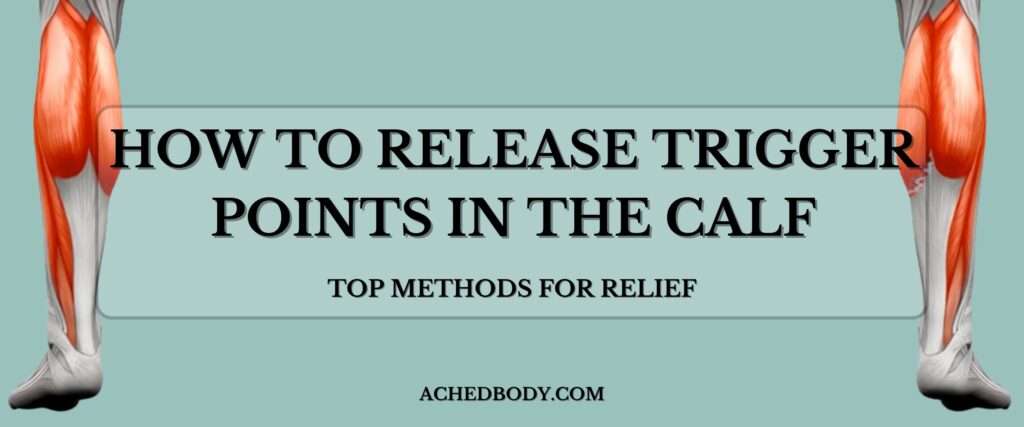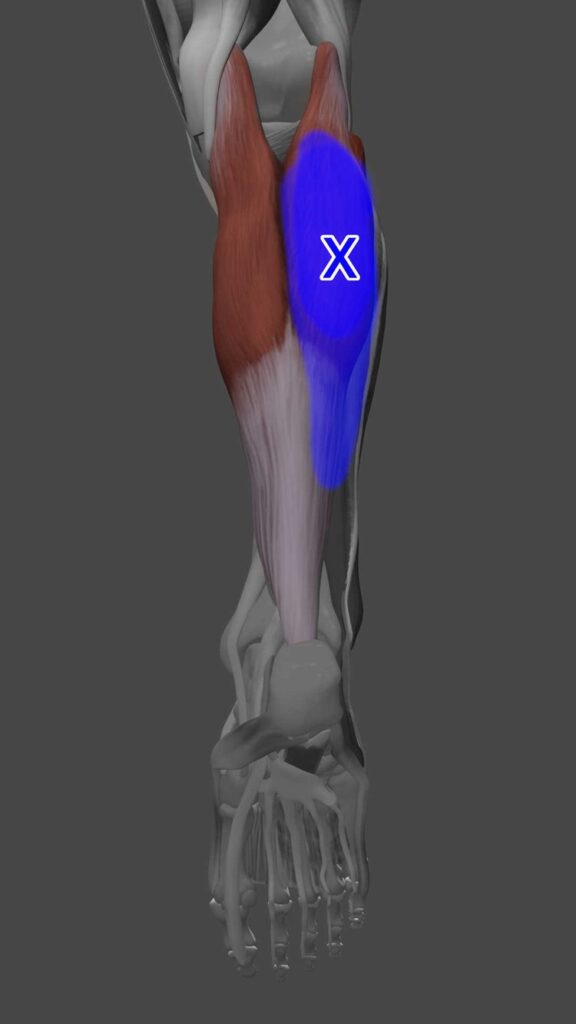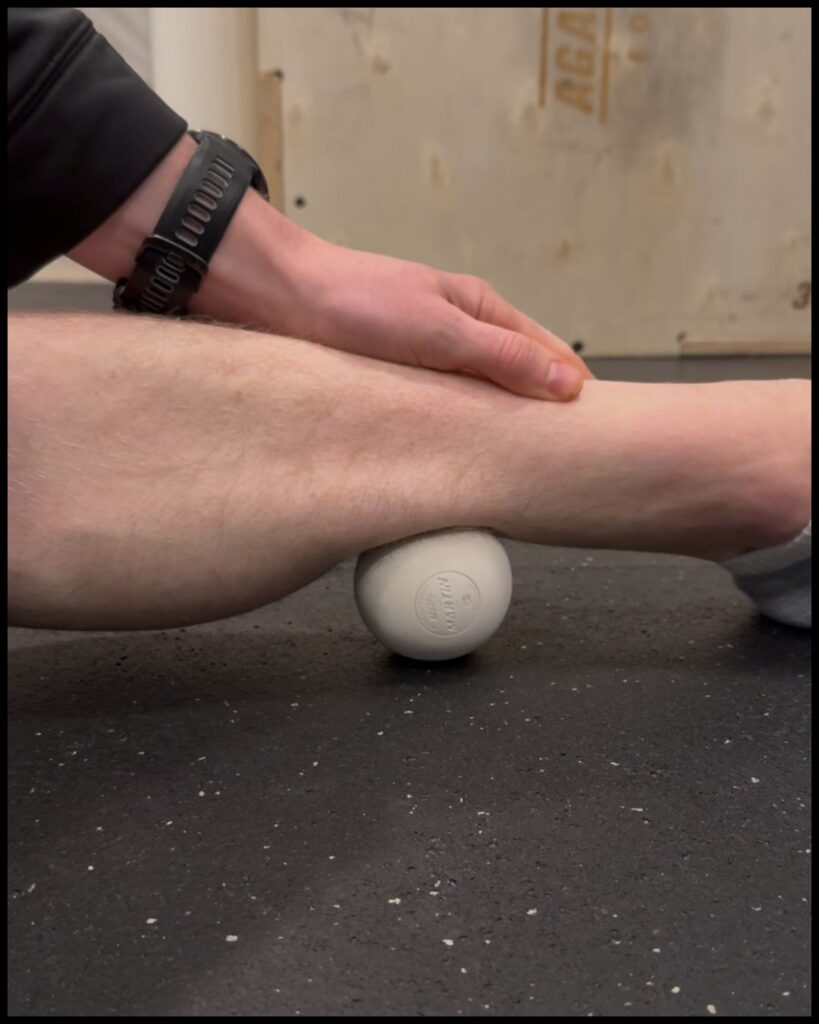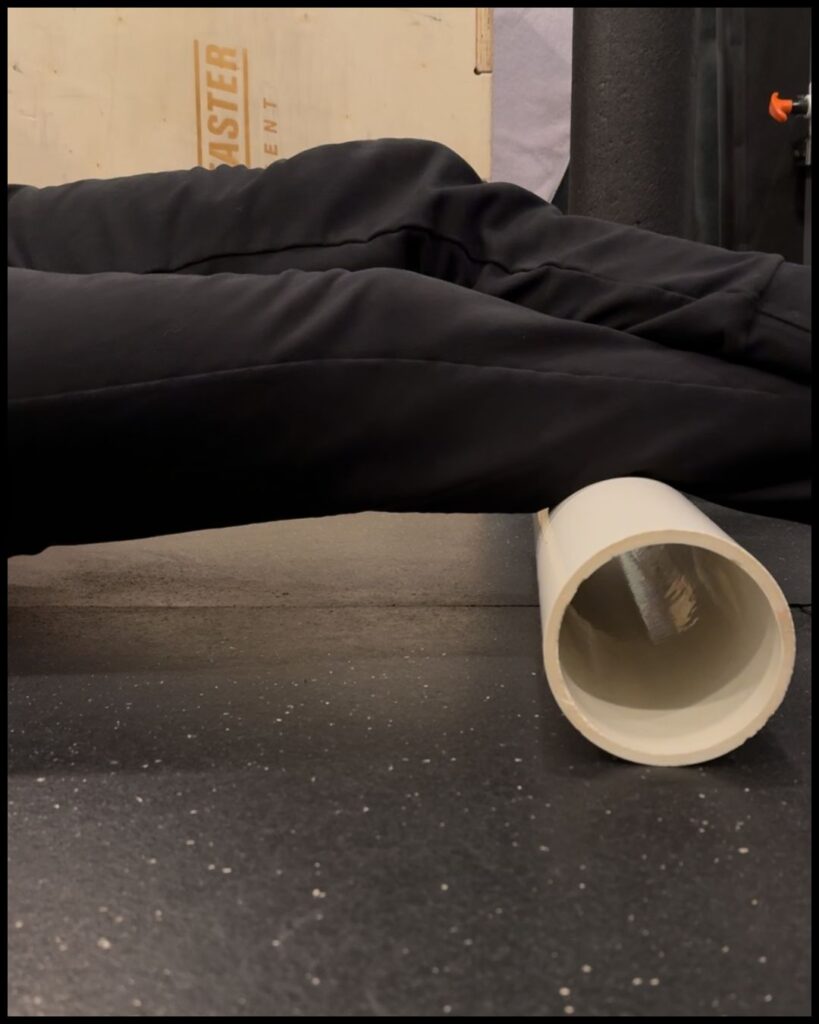
Releasing Trigger Points in the Calf
If your calves feel tight no matter how much you stretch, you may be dealing with trigger points.
Unlike general muscle stiffness, trigger points don’t just make your calves feel tight; they prevent full muscle relaxation and create chronic tension.
If you’re looking for general calf relief methods, check out our Guide to Fixing Tight Calves. If you want to incorporate foam rolling into your recovery routine, visit our Foam Rolling for Calves Guide.
Let’s get to it!
How to Identify Trigger Points in the Calf
Trigger points in the calf muscles can be tricky to identify because they don’t always cause pain where they originate, but when you find them… you will know.
All you have to do is take a tennis ball or lacrosse ball, and slowly roll it with some pressure across the muscle to find the trigger points.
There are two primary muscles in the calf where trigger points commonly develop.
Here are the most common spots:
Gastrocnemius Trigger Points (Upper Calf)
The gastrocnemius is the larger, more superficial muscle in the calf. It has two heads—medial and lateral—where trigger points form. Read the deep dive on Gastroc Triggering here.

credit: Morningside Acupuncture
NYC
Medial Gastrocnemius Trigger Points (Inner Calf)
This section is located in the inner upper portion of the calf. It can be quite sensitive and can cause pain behind the knee and down the inner side of the leg.
Lateral Gastrocnemius Trigger Points (Outer Calf)
This section is found in the outer upper portion of the calf. It can feel very dense as the layers of muscle get stuck and have a difficult time sliding smoothly against each other.
Tightness and trigger points here can create pain on the outer knee and sometimes into the shin.
Soleus Trigger Points (Lower Calf & Deep Muscle Tension)
The soleus is the deeper, postural calf muscle that plays a major role in walking and is mistaken for Achilles tendon pain. Check out the detailed Soleus guide here.
It is important to realize that pain in your joints is often a sign of muscle tightness around the joint.
Soleus Trigger Points
Apply pressure from all angles to force the muscle to relax. I like to use a lacrosse ball and use the different techniques found on my Ultimate Trigger Point Guide.
As I pause in the tightest areas, I do ankle rolls and flex my foot to stretch the muscle I am pinning.
Self-Treatment for Calf Trigger Points
Once you’ve identified trigger points in your calf, the next step is to release them using targeted self-treatment techniques.
I’ve touched on some of them a little bit already, but these methods focus on using pressure to break up muscle adhesions.
Below are the most effective techniques for releasing calf trigger points and you can watch this video to see what I’m talking about too!
Manual Pressure Release (Using Fingers or Massage Tools)
This technique involves applying steady, deep pressure to the trigger point until the muscle begins to relax.
How to Perform Manual Pressure Release
- Find the Trigger Point: Using your fingers or a tool, locate the most tender, knot-like spot in your calf muscle.
- Apply Firm Pressure: Use your thumb, knuckles, or a massage tool (I prefer a lacrosse ball) to press into the trigger point.

Hold steady pressure for 30 to 90 seconds.
- Adjust as Needed: The discomfort should decrease as the muscle releases, especially if you pair it with a stretch. If the pain is too intense, ease up slightly. You don’t want to damage the tissue.
- Repeat on Other Areas: If multiple trigger points are present (very likely), repeat the process on each one.
Massage Ball Method (Using a Small Ball for Release)
A massage ball allows for deeper penetration into the muscle tissue while also giving you the ability to apply sustained pressure over time.
How to Perform the Massage Ball Release
- Sit on the floor with your legs extended.
- Place a massage ball under the tightest area of your calf.
- Use your hands to support your body or apply gentle downward pressure onto the ball.
- Slowly move your leg to roll the ball across the muscle while stopping to hold pressure on painful spots.
- Hold for 30 to 60 seconds on each trigger point until the discomfort decreases.
- For added intensity, cross your other leg over the top to increase the pressure.
- Repeat on different areas of the calf, focusing on both the gastrocnemius and soleus.
For more techniques read the beginning of the Ultimate Guide to Trigger Pointing.
If you need a larger surface area or a more dynamic release method, foam rolling is a great next step.
Foam Rolling for Trigger Points

While it doesn’t target trigger points as precisely as manual pressure or a massage ball, it can loosen up connective and muscle tissue in a different way.
How to Foam Roll for Trigger Point Release
- Sit on the floor and place a foam roller or large PVC pipe under your calf.
- Use your hands to lift your body an inch off the ground so your calf presses into the roller.
- Roll slowly from your Achilles tendon to just below the knee.
- When you find a painful spot, pause and hold pressure for 30 to 60 seconds.
- Move your foot in slow circles or flex and point your toes to enhance the release.
- For deeper pressure, cross your other leg over the top.
- Repeat for 2 to 3 minutes, focusing on both the gastrocnemius and soleus.
- Finally, stretch the muscle to help integrate the new changes.
For a full step-by-step guide on foam rolling for the calves, check out our Foam Rolling for Calves Guide.
Which Method Should You Use?
All of them are very effective. I like trigger pointing with a massage ball, but there is a time and place for all of them!
Often, the best approach is a combination of all three.
Now You Try!
Now that you know how to trigger point, you may want some extra detailed info.
Oftentimes, people realize that trigger pointing helps, but it doesn’t 100% fix all the issues. That is why it’s important to integrate these three fixes for tight calves!
By addressing trigger points at the source, you’ll not only relieve tightness but also prevent future stiffness and injuries.
Good Luck!
– Nick